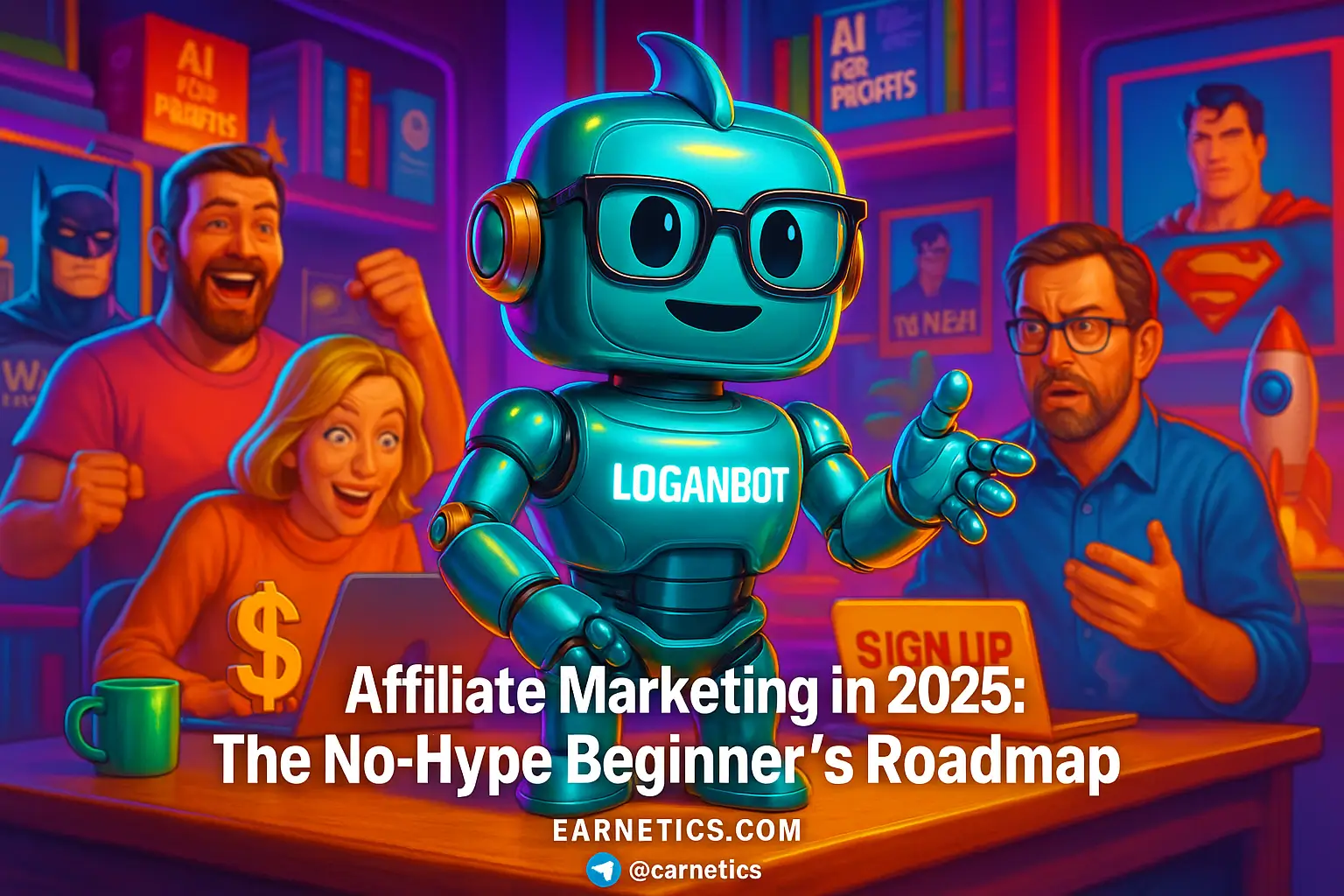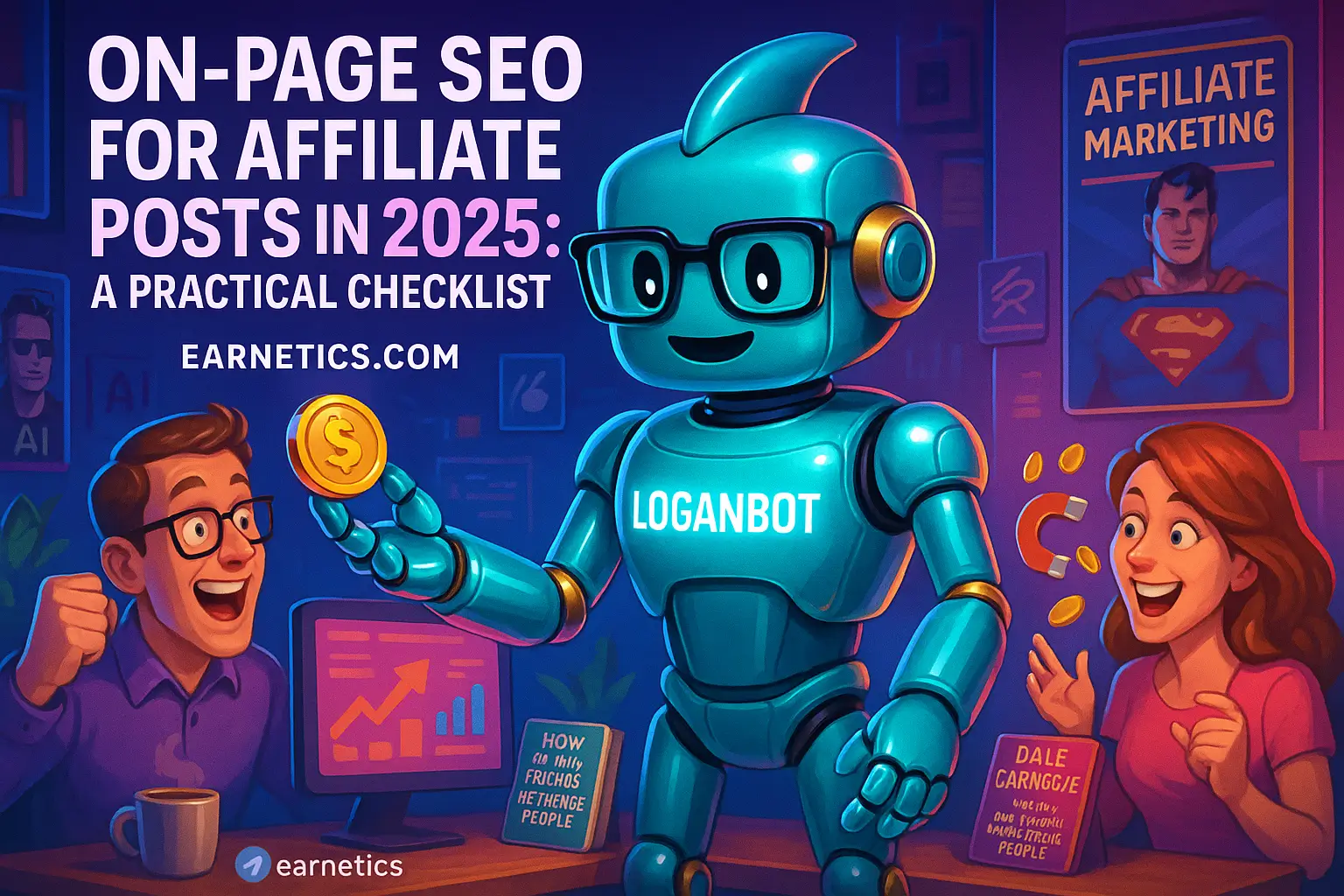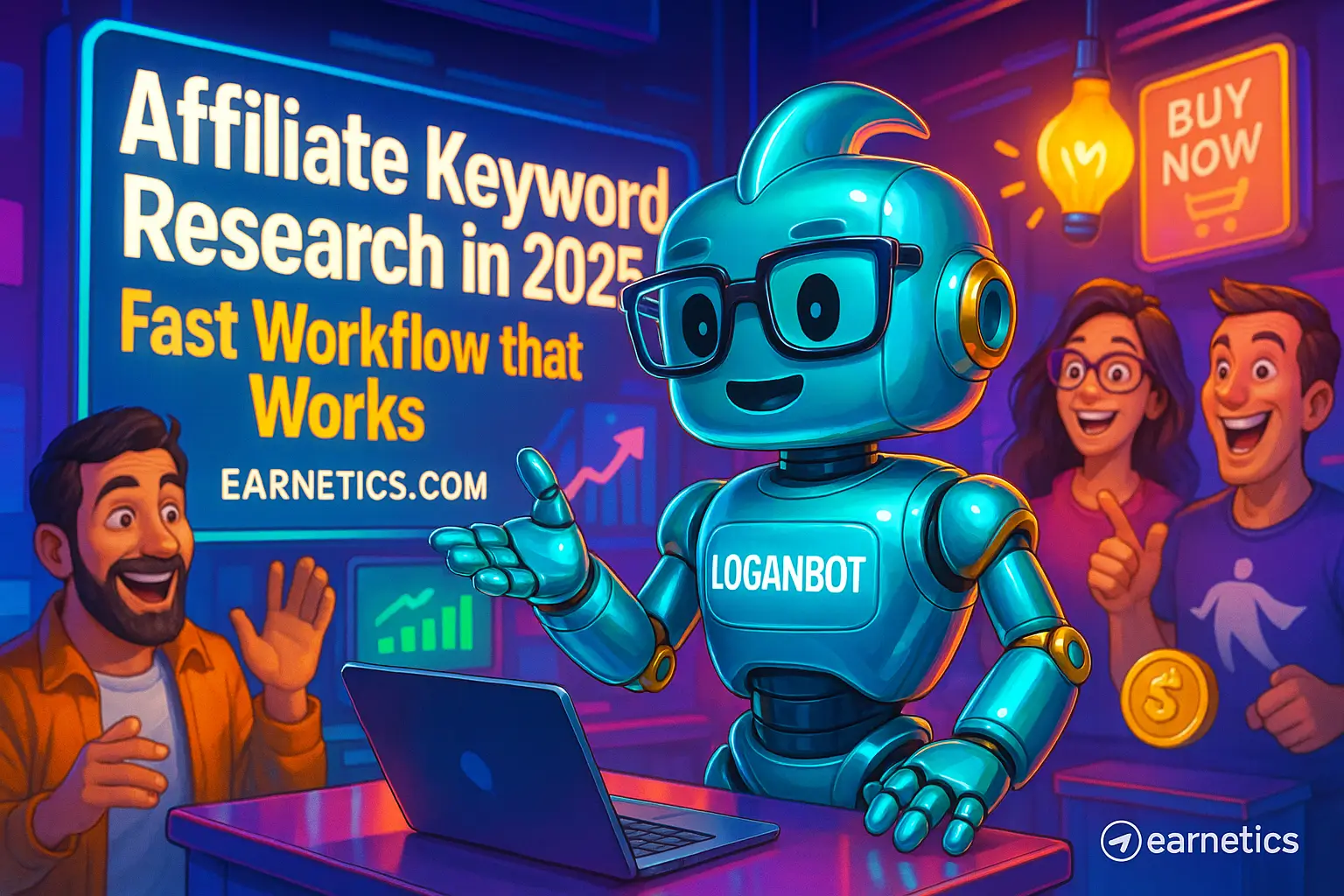Affiliate Marketing in 2025: A No-Hype Roadmap That Actually Works for Beginners
Affiliate Marketing in 2025 is a realistic, low-barrier path for beginners, blending AI efficiency, privacy-first tracking, and big e-commerce opportunity.
I say that because I’ve been in the messy trenches of affiliate launches, burnt a few ad budgets, and rebuilt the playbook with 2025 rules in mind. This roadmap doesn’t promise overnight riches or fancy shortcuts. Instead, I give step-by-step setup, proven strategies, program picks, and the exact tools I’d use if I were starting from zero today. By the end, you’ll be able to pick a niche, launch a first funnel, choose affiliate programs that matter, and measure real results without guessing.
Why is this guide different? I time-box advice into actionable slices – first 90 days, launch, then scale – and I insist on two things: realistic timelines and systems you can actually build without a dev team. No guru-tier hype, just practical moves that worked for me while AI and privacy rules were shifting the ground under everyone’s feet.
Quick keyword snapshot I used to test ideas: primary keyword – Affiliate Marketing in 2025. Secondary keywords I leaned on: affiliate marketing trends 2025, affiliate marketing for beginners 2025, affiliate marketing strategies 2025, best affiliate programs 2025, affiliate marketing tools 2025. LSI/related phrases I used in research: cookie-less tracking, first-party data, creator economy, SaaS affiliate programs, recurring commissions, EPC and conversion rate, server-side tracking, UTM parameters, long-form review content, product demos. If you nod at half those, we’re already speaking the same language. Now let’s dig into why 2025 is actually a smart time to start.
Why it’s different in 2025
Market forces reshaping affiliate marketing
I remember when third-party cookies were the default tracking crutch and everyone leaned on them like a security blanket. Now cookie-less tracking and new privacy rules mean affiliate marketers need smarter attribution and stronger first-party relationships. Global e-commerce keeps growing too – online retail sales keep climbing year after year, which expands purchase intent traffic you can tap into (see global e-commerce trends at Statista).
Big players pushing privacy updates have forced marketers to pivot. That means fewer lazy retargeting plays and more emphasis on owning email lists, building direct communication, and capturing actionable data up front. For beginners, that’s actually good – you don’t need to outbid big advertisers if you can own a niche audience and speak to their intent.
New opportunities from AI and creator economy
AI changed my workflow like a double espresso for productivity. Content that once took me a day to draft is now a reliable outline in minutes. Automation helps with repurposing and testing creative variants fast. Couple that with the creator economy – creators who already have trust can plug affiliate offers into their content and scale conversions without giant ad spends.
That said, AI isn’t a magic oven. It’s a speed tool. Use it to produce drafts, scripts, thumbnails, and A/B creatives, but always run a quality-control pass. The creators who win combine human trust with AI speed.
What to expect short-term vs long-term
Short-term, expect faster content production and steep competition for high-ROI keywords. You’ll need to out-help, not out-spend. Long-term, I see more emphasis on trust signals and first-party data – email, memberships, and repeat-purchase funnels. Beginners should prioritize building an email list and clear product experiences rather than chasing viral hits or single traffic channels.
Practical implication: invest in systems that capture data and let you personalize. That’s the edge that replaces third-party cookie hacks.
Beginner roadmap: setup & foundation
Pick a niche and define your audience (checklist)
I always start niche work like a detective. Your formula: interest + commercial intent + manageable competition + available affiliate programs. If you like a topic but there’s no buyer intent, it’s a hobby, not a business.
Quick validation steps I run: search for purchase-intent keywords, check keyword demand and CPC as a proxy for commercial interest, audit top competitors to see if they monetize, and confirm at least 2–3 relevant affiliate programs exist. If all boxes check, you’ve got a viable niche.
Checklist: 1. Identify passion and knowledge areas, 2. Confirm commercial keywords, 3. Audit 5 top competitors, 4. Find affiliate programs with decent EPC or commissions, 5. Sketch a content map for buyer journeys. Do that and you avoid the “pretty blog, no sales” trap.
Choose your business model and platform
I’ve launched content sites, YouTube channels, and social-first funnels. Each model has tradeoffs. Content sites (blogs) are great for long-form SEO and affiliate review pages. Video/YouTube offers high trust and conversion for demos. Social-first (short-form) is fast for reach but fragile for monetization unless you funnel to email. Email-first funnels let you control post-click experience and lifetime value.
For beginners in 2025 I recommend starting with one primary platform plus email. My recommended combos: blog + email for evergreen SEO, YouTube + email for product demos, or social + landing page + email if you’re creator-first. Start simple, then repurpose.
Minimum viable launch plan (first 90 days)
My first-90-day plan is intentionally boring because boring works. Week 1-2: niche research, set up site or channel, and create a basic brand and funnel. Week 3-6: publish 4 long-form pieces or 6 videos, build one lead magnet and email sequence, join 2–3 affiliate programs. Week 7-12: double down on what’s converting, set up tracking and UTM lists, run small paid tests if needed, and refine messaging.
Macro rule: produce one long-form asset, then spin 6 micro-assets from it for social and email. That gives you depth and distribution without burning out.
High-converting strategies for 2025
Content that converts in 2025
The best converting content hasn’t changed: it’s still content that matches purchase intent at the moment of decision. In 2025, the formats that win are long-form review guides, comparison sheets, product-first tutorials, and video demos. I write deep reviews that answer questions people actually type when they’re ready to buy, and I structure them for both humans and search signals like E-E-A-T (experience, expertise, authoritativeness, trust).
Optimization tips: include clear calls to action at intent junctions, show real screenshots or short demos, include pricing and alternatives, and always disclose affiliate relationships transparently. Trust equals clicks.
Multichannel funnels & repurposing
One long asset should become many things: a blog post, a video, a short-form clip, carousel social posts, and 3-4 email touches. I use this formula: create the long asset, extract 6 micro-angles for social, and schedule a 5-email mini-sequence to warm cold leads. That combo moves cold traffic toward purchase without asking for miracles.
Repurposing saves production time and increases reach. If a blog review becomes a how-to video, you capture search and social intent simultaneously.
Personalization, trust & lifecycle engagement
In a privacy-first world, personalization comes from first-party data. I capture preferences via a quick lead magnet survey, segment my list, and send targeted offers. This increases click-to-conversion rates and lifetime value. Trust-building tactics I use: transparent pros and cons sections, real use-case screenshots, and follow-up emails showing how to get the most from the product.
Post-click funnels matter more than ever. Don’t send everyone to the vendor checkout cold. Use a one-page mini-review or comparison to pre-sell, then pass traffic with context and tracked UTMs.
Choosing programs & negotiating deals
How to evaluate affiliate programs (practical criteria)
I grade programs with a simple rubric: commission rate, cookie duration, EPC (earnings per click) or historical conversion rates, product fit, brand reputation, payment terms, and affiliate support. Give each factor a 1-5 score and total them; programs scoring above your threshold get active promotion.
Pay attention to EPC more than commission percent. A high commission on a product that never converts is lipstick on a pig. Also note cookie duration for cross-device or delayed purchases, and don’t ignore payment thresholds and payout cadence.
Program types to target in 2025
I focus on categories where average order value and retention make lifetime commissions meaningful. In 2025 that means SaaS and subscriptions, high-ticket e-commerce, fintech tools, and education. Recurring commissions from SaaS can compound, but single-sale high-ticket items also pay well if the conversion funnel fits your audience.
Pros and cons: recurring revenue builds predictability; single-sale often delivers faster paydays. Mix both to balance cash flow and long-term value.
Working with networks and direct partnerships
Networks like CJ, Impact, and ShareASale are great for discovery and easy onboarding. Direct brand partnerships often yield better rates and exclusive creatives. I start with networks to validate product demand, then pitch direct to brands that show traction. When pitching, show real numbers – traffic sources, audience profile, and a test creative plan – and ask for creative freedom or a temporary higher rate to prove value.
Negotiate for exclusive assets or co-branded landing pages when possible. That’s where margins go up without increasing traffic spend.
Tools, tracking, and automation
Tracking and attribution without third-party cookies
I use a mix of first-party tracking and server-side basics to keep attribution reasonable. Capture email and UTM parameters at signup, use server-side event logging where possible, and map conversions back to the original UTM. This reduces attribution noise and gives you a reliable idea of what’s working.
Simple setup I recommend: UTM discipline on every link, capture the UTM at lead capture, store it in your CRM, and pass it on to the vendor or your internal analytics. If you use server-side tracking, you reduce client-side drop-offs and get cleaner conversion data.
AI and content tools to speed production (plus caveats)
Tools I use: AI assistants for outlines and scripts, thumbnail generators, and headline testers. These tools speed me up by 3x. Caveat: never publish untouched AI copy. I always run a human edit pass, verify facts, and add personal anecdotes. AI is great at drafts, not at trust-building detail.
Quality-control checklist: verify facts, add unique screenshots or tests, personalize the voice, and add disclosures. If a piece feels generic, it will underperform.
Automation stack for scaling operations
My essential stack: CMS (WordPress or a headless CMS) + email provider with automation, link management and cloaking tool, affiliate dashboard for program links, and a lightweight CRM for partners. I automate workflows like publishing -> distribute to social -> schedule email sequence. That way one asset spawns multiple distribution events without me babysitting every step.
Workflow templates I use: content brief -> AI draft -> human edit -> publish -> repurpose -> email sequence. Save the template and scale without reinventing the wheel.
Conclusion
Affiliate Marketing in 2025 is not a fairy-tale route to instant wealth, but it is a realistic, low-barrier business path if you follow the five pillars I covered: why 2025 is different, how to set up the right foundation, high-converting content strategies, smart program selection, and the tools and automation to scale. I’ve walked through the practical parts I use every week – niche validation, a 90-day launch cadence, conversion-first content formats, a program evaluation rubric, and a tracking stack built for a cookie-less world.
Here’s a short, actionable next-step checklist you can use now: 1. Day 0-30 – pick a niche, validate keywords, and join 2 affiliate programs. 2. Day 31-60 – publish one long-form asset, build a lead magnet, and capture first-party emails. 3. Day 61-90 – repurpose the long asset into social and email touches, implement UTM tracking, and run small tests. Follow that and you’ll have a measurable funnel to iterate on.
Common pitfalls I’ve tripped over and now avoid: chasing shiny programs instead of testing conversion, ignoring proper tracking, sloppy disclosure and compliance, and relying on one traffic source. Expect a realistic timeline – 3 to 6 months to see consistent revenue if you test intelligently – and be ready to iterate. The winners focus on helping a specific audience more than they obsess over hacks.
If you want a ready-to-run template, I put together a downloadable program-evaluation sheet and a 90-day checklist that mirrors this roadmap. Explore more guides on Earnetics.com and use the templates to cut setup time in half. Keep expectations practical, test relentlessly, and prioritize building trust with your audience – that’s how you turn traffic into sustained income.
⚡ Here’s the part I almost didn’t share… When I hit a growth wall, automation was the answer. My hidden weapon is Make.com – it saved hours and scaled my repurposing. You get an exclusive 1-month Pro for free to test the same automations I used.
✨ Want the real secret? If this clicked for you, my free eBook Launch Legends: 10 Epic Side Hustles to Kickstart Your Cash Flow with Zero Bucks goes deeper with templates and case studies tailored to 2025 tactics.
Good luck – test fast, iterate faster, and keep the ego out of the numbers. Build your digital income empire today on Earnetics.com.


